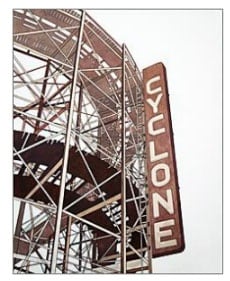Explorations and Surveys
William Steiger's collages are wonderous, often humorous refractions of early American landscapes. They traffic in a particular kind of anachronism, grafting zepplins, prop planes, gondolas, bridges, and the gleaming apparatus of the steam age onto the vast plains and prairies of the nineteenth-century frontier. The images dare us to reconcile two equally innocent visions of American life. One is taut, sleek, and brimming with technological optimism; the other is lush, free, and unspoiled. Neither, it goes without saying, have quite panned out as our forebears hoped they might.
The series, “Explorations & Surveys,” plays with our country's mythology, conflating more than a century of travel and invention into pale stories of our naïveté—everything in the world of these images is still ours for the taking. Steiger constructed the pieces using a nineteenth-century surveyors' guide.
His gallery, Pace Prints, explains: Steiger borrowed the abbreviated title, Explorations & Surveys, from the title of his source material, Reports of the Explorations and Surveys to Ascertain the Most Practicable and Economic Route for a Railroad from the Mississippi River to the Pacific Ocean. These accounts were published by the Federal Government in the late 1850s to both document the western regions and to locate the best routes for the forthcoming Pacific Railroad. Disseminated in bound editions, the volumes were essentially the first published images of the American West.

